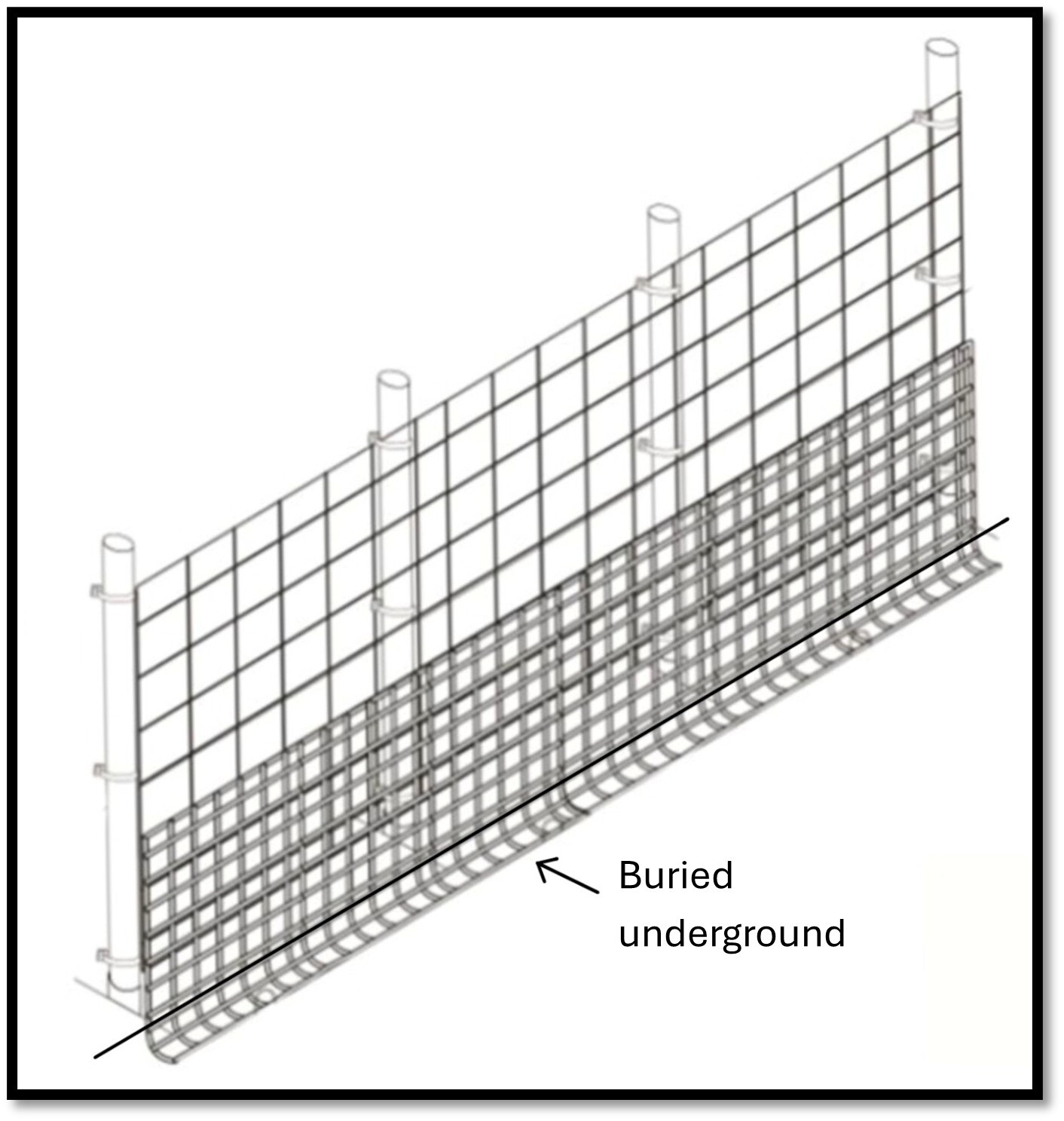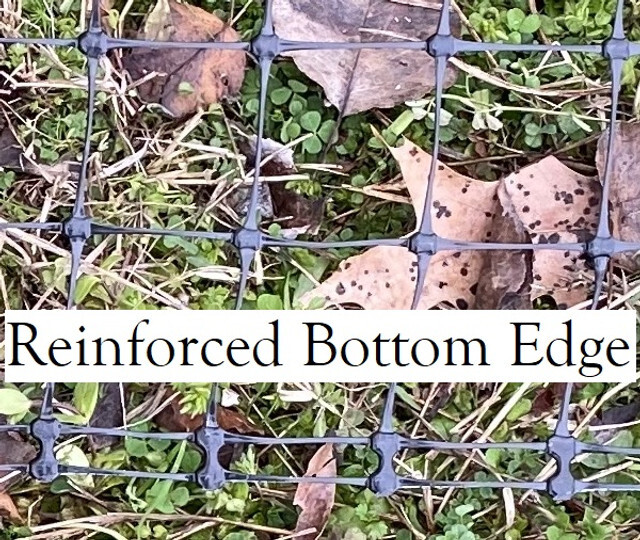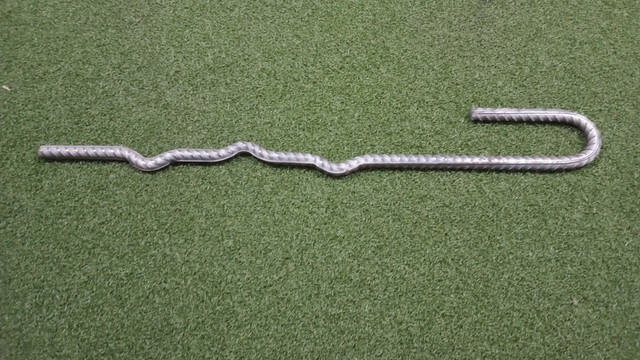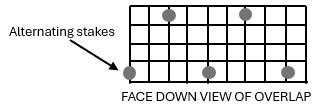Animal Fence - Should I Bury The Bottom?
Posted by Critterfence on Jun 23rd 2025
Should I Bury the Bottom of a Critterfence?
When it comes to keeping animals out of your yard there are multiple fencing options out there to create a barrier between your yard and the outside. Most fencing aims to keep larger animals out like deer, wild hogs, stray dogs and cats, coyotes and more but what about the craftier animals like rabbits, groundhogs and mice that can burrow under? There are many ways to prevent animals from slipping under your fence, including burying the fence mesh through trenching.
Trenching a fence is time consuming, but very effective at keeping digging animals out. When it comes to trenching the best way is to dig a 6-inch to 12-inch-deep trench slightly in front of the fence so your overlapping steel mesh can be installed at a slight angle away from the main fence and pointing towards the digging animals. Some people even decide to stake down the bottom of the dig guard to pin it down before filling in the trench to ensure it is secured down. Animals trying to get into an area will come up to the fence and try digging down to get underneath, with the fence continuing down underground they will eventually give up and move on!

Digging a trench to keep animals in or out is an exhausting endeavor, whether it’s digging by hand with a shovel or using a trench-digger. The modern approach to keeping animals from digging under the fence is to overlap! Having a secondary barrier of steel mesh or using the bottom of your fence as a dig guard is a much easier option. Simply pull at least 6-inches of mesh along the bottom out and stake down in an L-shape at the bottom of your fence facing the way the digging animals would be coming from. Our overlap fence kit systems include kinked ground stakes which are shaped like a candy cane and placed through the overlapping fence and into the ground to secure it. This works great for rabbits, groundhogs, and mice, but what about more aggressive diggers like stray dogs or coyotes? For this, we suggest overlapping the bottom of the fence with a foot of material, then securing with the ground stakes.
If you aren’t dealing with digging but instead are dealing with animals slipping underneath the fence, stake it down! Our polypropylene fencing has a graduated reinforced bottom feature, making a smaller and stronger grid on the bottom perfect for hooking and pinning down with the stakes.

There are different ground stake applications for different situations. Our ground stakes or rebar stakes are very different from sod staples which people have used to pin fencing down. Sod staples are straight and good for a temporary application, but because they are thinner and completely straight, they aren’t good for pinning down fence over time since they don’t grip the soil. Our rebar stakes aren’t found anywhere else, with typical rebar stakes being straight, the kinked feature of these give them an extra boost to their holding power. For sandy soil or extremely tough compacted soil, we suggest the heavier duty-kinked rebar options! For a typical yard application or grassy areas, we have 12” kinked galvanized ground stakes. These are lighter than rebar, easier to put in, and will secure your fence to the ground. All our stakes can be purchased in individual packs or in an entire case, the kinked rebar stakes are available in packs of 20 or a case of 100, and the 12” kinked galvanized ground stakes are available in 30 packs or cases of 150 linked here! Shop - Gates, Posts And Everything Else - Everything Else - Ground Stakes & Staples (Attach Fence To Ground) - Critterfence.com

When it comes to pinning overlap down, we recommend a different approach than just pinning the fence down along the edge of the overlap. We suggest alternate staking – one close to the fence, one close to the end of the overlap, one close to the fence and so on! The diagram below gives a visual example of this.
|
||||

When it comes to placing stakes, we suggest you place one every 4ft for typical installations regarding rabbits or groundhogs, for dogs you want to bring the spacing a little closer to around 3ft or less. When it comes to extreme digging concerns or cats, you want to bring them in even closer at 2ft increments. Over time, the vegetation will grow up and cover the overlap effectively burying it and helping pin it more securely in the ground. This will make upkeep around the edges of the fence much easier!
Be sure to research what animals you are dealing with to narrow down what type of stake and spacing would be appropriate for your installation and feel free to call us at 855-921-7900 for any questions!

